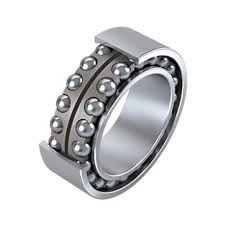
Sep . 16, 2024 02:43 Back to list
taper roller bearing series
Taper Roller Bearing Series An Overview
Taper roller bearings are crucial components in many types of machinery, providing efficient support for both radial and axial loads. These bearings are designed with tapered inner and outer raceways, and their rollers are shaped like a frustum of a cone, allowing them to handle heavy loads while minimizing friction during operation. This design is particularly beneficial in automotive applications, industrial machinery, and various types of equipment.
Taper Roller Bearing Series An Overview
Taper roller bearings are categorized into several series based on size and load capacity. The most common series include the 30000 series and the 40000 series, with each series featuring different dimensions and performance characteristics. When selecting a taper roller bearing, it is essential to consider factors such as the load rating, speed capabilities, and environmental conditions in which they will operate. This ensures optimal performance and longevity.
taper roller bearing series

In terms of installation, taper roller bearings require precise alignment. Proper adjustment is crucial to ensure even distribution of the load across the rollers, which in turn prevents premature wear and potential failure. Many manufacturers recommend following specific procedures and using appropriate tools to achieve the best results during installation.
Additionally, maintenance of taper roller bearings is key to their durability. Regular inspection for signs of wear, contamination, or insufficient lubrication can help identify potential issues before they lead to failure. Many modern designs include seals or shields to protect against dirt and moisture, further enhancing their lifespan.
The taper roller bearing series has been integral to advancing engineering technologies, contributing to improved machine performance and reliability. As industries continue to evolve, the design and manufacturing processes of taper roller bearings are also likely to advance, incorporating new materials and technologies to meet changing demands. Understanding this vital bearing type is essential for engineers and professionals involved in machinery design and maintenance, ensuring they can select and care for these bearings effectively.
Latest news
-
Common Failures in Thrust Ball Bearings and Solutions
NewsAug.22,2025
-
How Tapered Roller Bearings Can Take Shock Loads
NewsAug.22,2025
-
Angular Bearings in High-Precision Spindles
NewsAug.22,2025
-
The Impact of Misalignment on Cylindrical Roller Bearing Performance
NewsAug.22,2025
-
The Role of Cage Design in Deep Groove Ball Bearing Durability
NewsAug.22,2025
-
The Impact of Material Quality on Machinery Bearings’ Lifespan
NewsAug.22,2025
